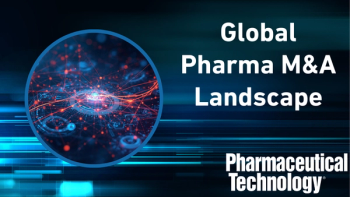
Focus on Biosimilars
The total market for biopharmaceuticals in 2013 was $36.8 billion according to Kalorama Information. Meanwhile, Frost & Sullivan estimates that the biosimilars market, which it pegged at just $1.2 billion in 2013, will grow to $23 billion in 2019, or more than 20-fold increase.
The total market for biopharmaceuticals in 2013 was $36.8 billion according to Kalorama Information. Meanwhile, Frost & Sullivan estimates that the biosimilars market, which it pegged at just $1.2 billion in 2013, will grow to $23 billion in 2019, or more than 20-fold increase. What is driving this tremendous expansion? The approval of monoclonal antibody biosimilars, greater clarity with respect to biosimilar regulations in major markets such as the US and Japan, and growth of sales in many emerging markets, which are also developing regulatory approval pathways, are key factors.
The market for biosimilars is more advanced in Europe, which has had an established biosimilar approval pathway in place since 2006. The US is comparatively in its infancy. While a pathway has been in place in principle since March 2010, there has been significant uncertainty regarding specific requirements. FDA has since 2012 issued several guidance documents outlining its expectations for demonstrating biosimilarity. Sandoz and Celltrion made news in July and August, respectively, with the first filings for biosimilar approvals in the US: Sandoz for Amgen’s Neupogen (filgrastim) and Celltrion for Johnson & Johnson’s Remicade (infliximab).
In addition, in September, FDA announced the creation of the Purple Book, which lists approved innovator biologics that can serve as reference products for biosimilar applications and, along with the date the product was first approved and the date that the 12-year exclusivity period will (or has) expired. For biosimilars, there is also a column to indicate whether the product is interchangeable (I) with the branded drug or a biosimilar that has not been awarded interchangeability (B). There are of course no biosimilars in the book yet. Even so, biopharmaceutical manufacturers now have a book analogous to the “Orange Book” for small-molecule originator drugs and generics.
Many emerging market countries, such as Brazil, Mexico, Venezuela, Columbia, India, Russia, China, and some African countries are developing pathways for biosimilar approvals. In fact, many companies are launching biosimilars in developing countries where the approval pathways are often less stringent or under development, because the process is more rapid and less costly, and it is possible to gain market experience, collect market data, and recoup some of their investment. It should be noted, however, that many branded drug manufacturers do not see many of these products as true biosimilars because they are not developed in line with established regulatory guidelines for biosimilars.
With respect to monoclonal antibodies (mAbs), McKinsey & Company estimates that approximately 40% of biosimilars in development are mAbs, and that percentage will only increase. By 2020, patents are set to expire on several mAb-based drugs with annual sales greater than $5 billion each in the year of US expiry, according to Jorge Santos da Silva, a principal in the Swiss office of McKinsey & Company. Celltrion and its partner Hospira were the first to receive European approval for a mAb biosimilar in 2013 (infliximab). Others are expected as products such as trastuzumab (Herceptin from Roche) and Adalimumab (Humira from Abbott) lose patent protection. Most major international pharmaceutical companies are developing biosimilar Mabs, including Pfizer, Amgen, Merck Serono, and Boehringer Ingelheim. Leading generics firms, including Sandoz, Mylan, and Teva, are active in this area as well. Other product categories that are expected to help drive the growth of the biosimilars market include follitropins, interferons and low molecular weight heparins, according to Frost & Sullivan.
Newsletter
Get the essential updates shaping the future of pharma manufacturing and compliance—subscribe today to Pharmaceutical Technology and never miss a breakthrough.




